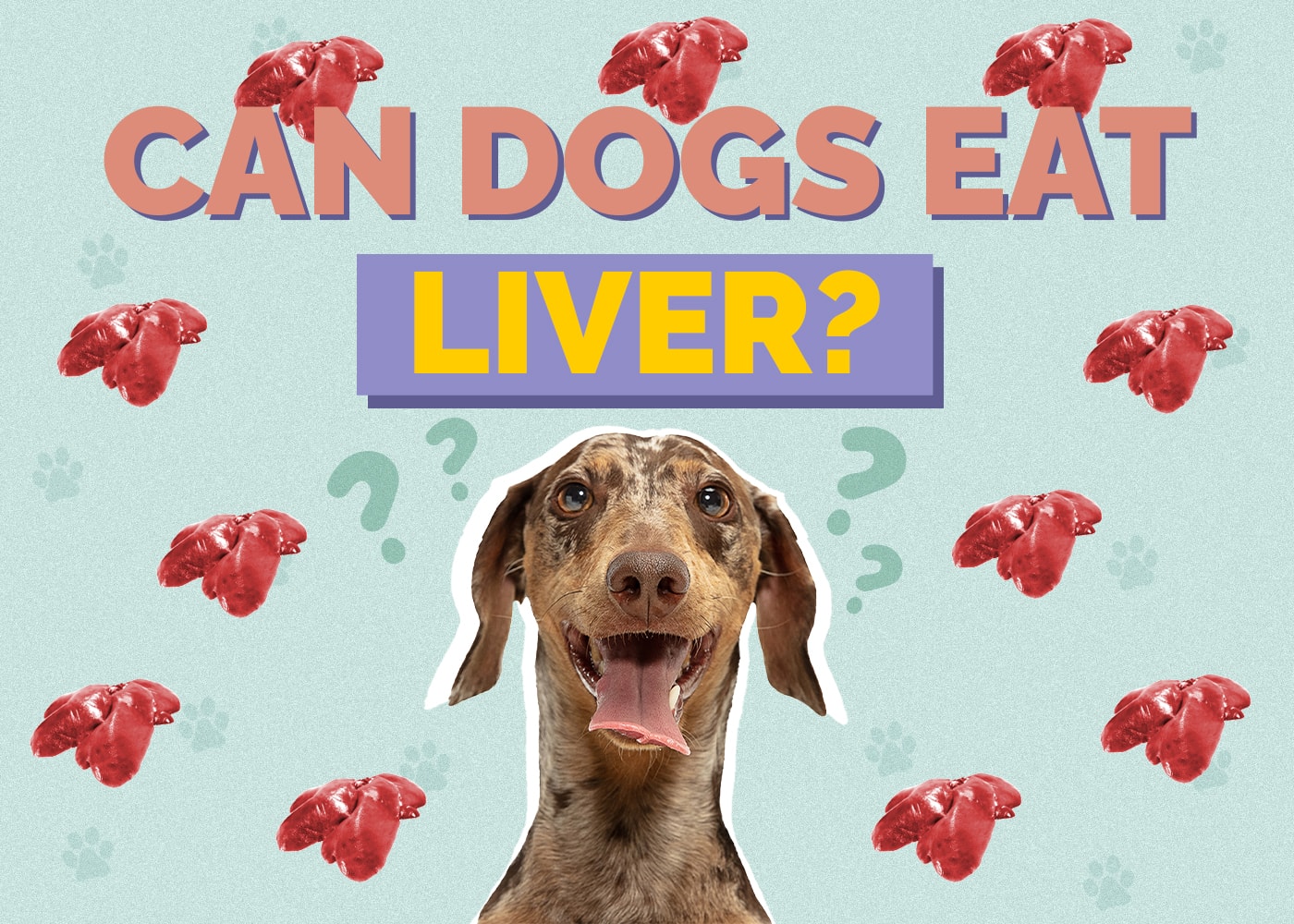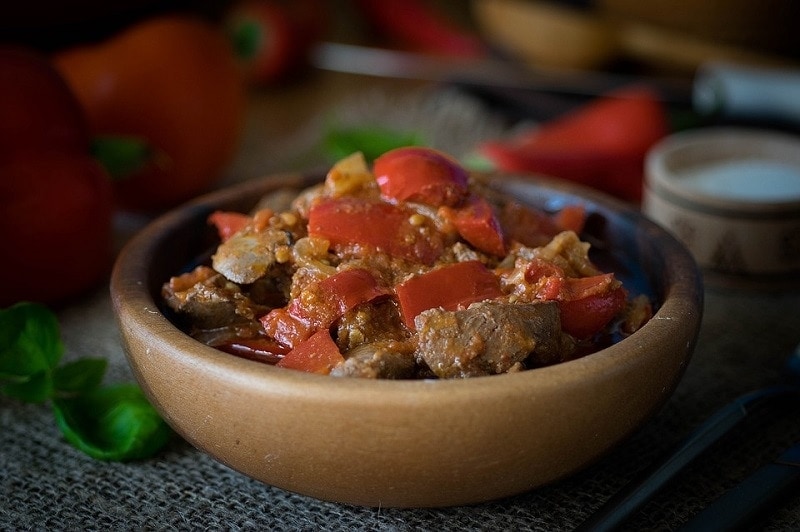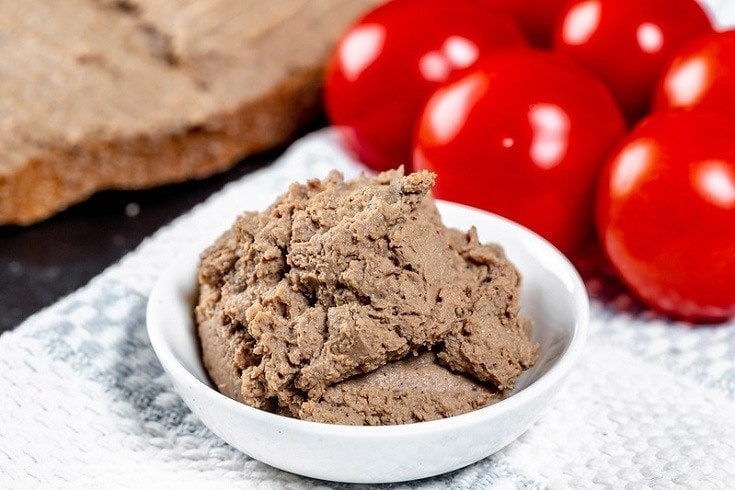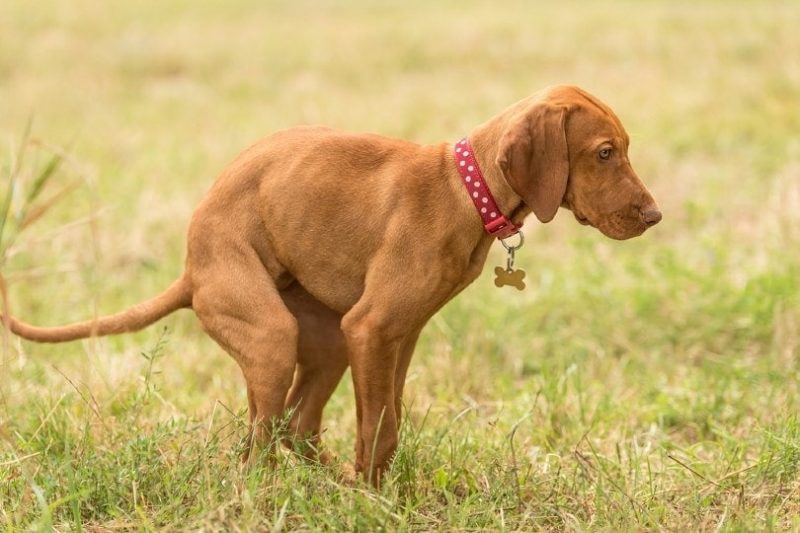Can Dogs Eat Liver? Vet Reviewed Facts & FAQ

Updated on

We like to vary our dog’s diet occasionally, but we should be aware of what foods are good for them. What about liver? Yes, dogs can safely eat liver. And it’s not just healthy for them, but many dogs go bonkers for it! In fact, you’ll find liver a key ingredient in many dog food brands and treats. On the flip side, too much liver can make your pup sick.
In this article, we’ll talk about why liver is healthy for dogs, along with risks you should keep in mind. We’ll also touch on the best ways to feed liver to your furry buddy and answer some common FAQs about this amazing organ meat.
 The Health Benefits of Liver for Dogs
The Health Benefits of Liver for Dogs
Liver is an organ meat and one of the most nutritionally-dense sources of protein for dogs. It’s packed with:
- Lean Protein: Liver is loaded with protein while being low in fat. Adding liver to your dog’s diet is a great way to help them hit their protein requirements.
- Vitamin A: Vitamin A helps keep your dog’s coat shiny, skin healthy, vision sharp, and also plays a part in immunity. Liver is loaded with it!
- B Vitamins: Liver contains B vitamins (e.g., pyridoxine, cobalamin, riboflavin, thiamine) which dogs need for energy production, metabolism, and to maintain healthy cells.
- Iron: Dogs require iron in their diet, as this mineral helps them produce red blood cells, and also supports everything from brain function to immune health.
- Other Vitamins & Minerals: Aside from iron, vitamin A, and B vitamins, liver is basically an alphabet of vitamins and minerals like vitamins K, D, copper, riboflavin, phosphorus, potassium, and zinc.
It’s no exaggeration to say that liver is a canine superfood. The catch? Liver is such a concentrated source of nutrients that too much can lead to several health problems for dogs.

What Happens If I Feed My Dog Too Much Liver?
It’s great to give your pup liver, as long as it forms just a small part of their diet. Too much liver can lead to:
Vitamin A Overdose
The Association of American Feed Control Officials (AAFCO) only recommends 5,000 IU of vitamin A for every kilogram of dog food. In comparison, 100 grams of chicken liver already has 11,100 IU of vitamin A—too much for any dog!
When a large amount of Vitamin A is consumed in a very short period of time, this can cause acute vitamin A poisoning, with symptoms like drowsiness, vomiting, irritability, and in extreme cases peeling of the skin. The Gradual over-supplementation of vitamin A can cause it to build up, and also lead to poisoning, but in this case, the signs aren’t as drastic or sudden.
Iron Overload (Hemochromatosis)
Liver is a particularly rich source of iron, which is great for dogs in moderation. But too much iron makes it difficult for your pup to process and eliminate the mineral, leading to a build-up in the bloodstream. Iron overload can cause everything from joint pain to organ damage and, if left untreated, can be fatal.

Diarrhea & Digestive Upset
Anything that is extremely rich in nutrients, such as liver, can cause digestive issues in dogs. Eating too much liver at once can cause loose stools, tummy aches, vomiting, and other signs of stomach upset in your dog.
How Much Liver Can I Feed My Dog?
To be on the safe side, only give your dog liver as an occasional treat. As nutrient-rich as liver is, your dog’s regular diet should already give them all the protein, vitamins, and minerals that your dog needs.
As for how much, we recommend following the ASPCA’s recommendation that treats should only make up 5% or less of your dog’s daily diet.
That means that if your pup requires 500 calories a day, only 25 of those calories should come from treats, including liver. However, if your pup is a large breed, or is very active and has a higher caloric requirement, liver treats can be a healthy protein-rich treat to offer. Note that 10 grams of liver has about 17 calories, and every calorie should be considered in your pet’s daily requirements.
If you’re not sure about your dog’s caloric requirements, ask your vet or a dog nutritionist for assistance.

How to Feed Liver Safely to Your Dog
When feeding liver to your dog, follow the golden rule of introducing any new food to your best bud: go slow and start small. Before you give your pup a taste, however, keep these safety tips in mind:
- Check Your Dog Food for Liver Content: Because most dogs love liver, it’s used to make dog food more palatable and to meet the requirements of the AAFCO and other regulatory bodies. Before you give your pup liver treats, check the nutritional info on their regular food to make sure they’re not already getting a good dose of liver.
- Just a Sliver of Liver: Remember, liver is a concentrated source of nutrients, so you don’t need to give your pup much to get the benefit. Start slow with just a taste.
- Go for the Fresh Stuff: Make sure to get your liver from a reputable source, such as your local grocery store. The fresher the liver, the better! Watch out for any signs of spoilage, such as discoloration or an off smell.
- Only Give Your Dog Plain Liver: That means no oil, spices, aromatics, or seasonings.
- Consider Cooking the Liver First: Unless you’re feeding your dog a raw diet, we recommend cooking the liver before giving it to your dog. Methods of preparation include freeze-drying, boiling, broiling, grilling or baking. This will help reduce any risk of foodborne illness for both you and your dog.
- Consult Your Vet: If your dog is taking medications or on a prescription diet, we urge you to check in with your vet before feeding them liver.
- Observe Your Dog: Keep an eye on your pup after feeding them liver and discontinue the treat if you notice any signs of digestive upset such as vomiting, diarrhea, lethargy, or loss of appetite.
If you’re still unsure about giving your dog liver, rest assured that it’s not an essential part of their diet. While liver is a great source of nutrition for dogs, there are plenty of other treats and foods that can provide the same benefits without any risk. You can skip liver altogether, and your dog won’t know the difference!
 FAQs
FAQs
Can Dogs Eat Liver & Onion?
No. Never feed your dog liver and onion. Onion is toxic to dogs, and the combination can lead to serious health issues. Stick with plain liver and avoid any seasonings or spices.
Can Puppies Eat Liver?
Yes, weaned healthy puppies can be given properly prepared liver as an occasional treat.
Is Cooked Liver Okay for Dogs?
Yes, cooking is the recommended way to feed dogs liver. The process of cooking will kill any bacteria or parasites that may be present. Skip the spices and seasonings; try boiling, steaming, or grilling liver plain.

Is It Okay for Dogs to Eat Liver Every Day?
No. Dogs shouldn’t eat liver every day, especially if you’re already feeding them nutritionally-complete dog food.
What Types of Liver Can Dogs Eat?
Dogs can eat most types of liver, including those from chicken, beef, pork, lamb, and duck. As long as it’s fresh and plain, your pup can safely enjoy it. Avoid oddball or wildlife sources of liver such as walrus, moose, polar bears, and seals.
 Conclusion
Conclusion
Liver is a great source of nutrition for dogs, offering plenty of vitamins, minerals, and lean protein. When fed in moderation and without any spices or seasonings, it can be an occasional healthy treat for your pup. But before giving your dog a bite of this delicious organ meat, be sure to check with your vet first, start small, and observe your dog for any adverse reactions before giving them more.
Featured Image Credit: Sergey Lapin, Shutterstock

 The Health Benefits of Liver for Dogs
The Health Benefits of Liver for Dogs










